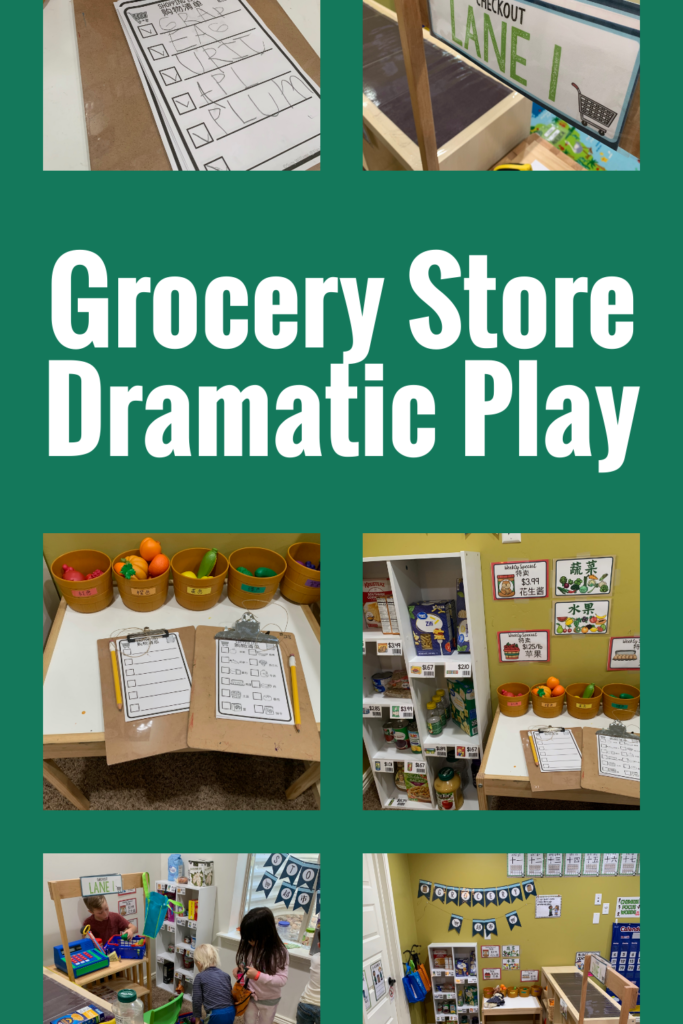Pretend play is an important part of the early childhood development process. Not only is it an engaging and fun activity, but it also helps children learn valuable skills like language, problem-solving, social interaction, and more. Setting up a dramatic play grocery store for young kids, toddlers, preschoolers, and kindergarteners is a great way to encourage pretend play in the early childhood setting. A dramatic play grocery store can provide children with an opportunity to use their imaginations, practice real-world skills, and build their self-confidence.
Disclaimer: I’ve used affiliate links in this post so if you use them to make any purchases I may receive a small commission at no extra cost to you. I’d also appreciate it very much!
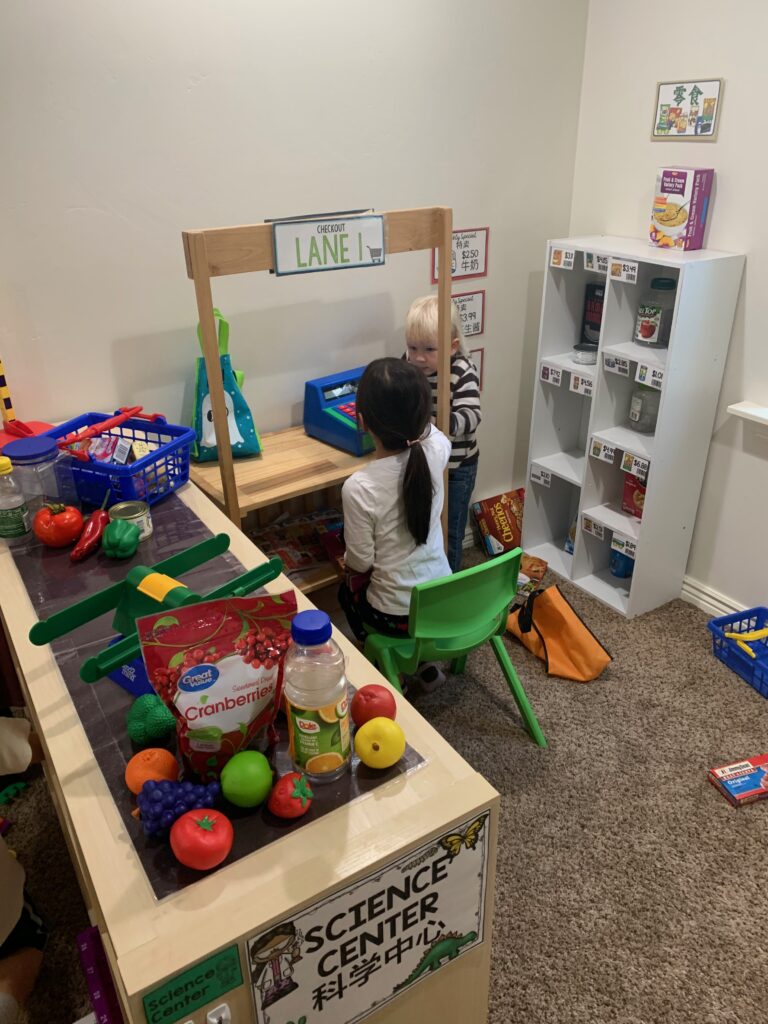
What is pretend play?
Pretend play, also known as dramatic play, is a form of play where children use their imagination to act out different scenarios and play different roles. This type of play has been around for a long time, and it’s been used in preschool settings for many years. Some early childhood experts believe that dramatic play is an important part of a child’s development.
So, how does it work? Well, let’s say you set up a dramatic play grocery store in your classroom. The children can pretend to be customers, cashiers, or even stock clerks. They can use empty food containers, cash registers, and shopping carts to bring their imaginative world to life. The goal is to encourage children to engage in a world of pretend, where they can act out different roles and learn new things.
Now that we’ve defined pretend play, let’s take a look at why it’s so important.
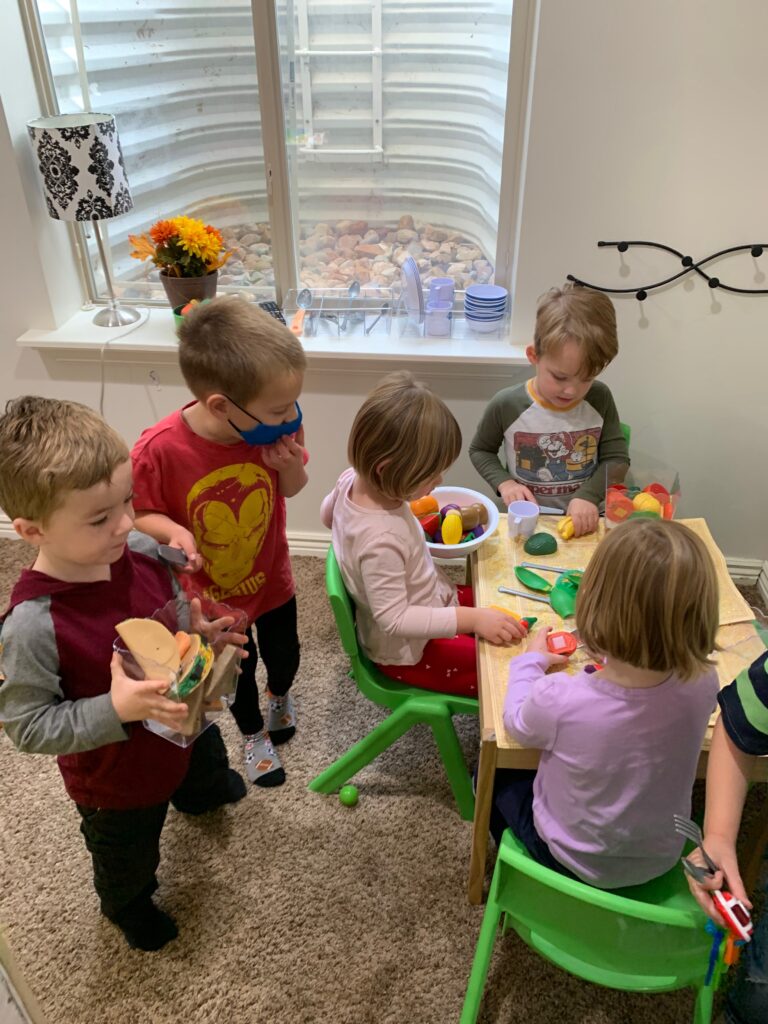
The benefits of pretend play
Pretend play, also known as dramatic play, is a crucial activity in early childhood development. According to a study published in the American Journal of Play, pretend play is linked to improvements in problem-solving skills, creativity, language development, and social-emotional development.
Research shows that pretend play helps children learn to regulate their emotions, develop empathy and social skills, and build self-esteem. Through pretend play, children learn to take on different roles and perspectives, communicate effectively, and work collaboratively with others.
Setting up a pretend play grocery store is an excellent way to encourage children to engage in pretend play and reap the benefits. Through role-playing as customers and employees, children can practice their communication and negotiation skills while learning about healthy eating habits, budgeting, and counting money.
Parents can also benefit from setting up a pretend play grocery store at home. Studies have shown that parents who participate in pretend play with their children have better relationships with them and experience less stress. Pretend play provides an opportunity for quality bonding time and can help parents understand their child’s perspective and interests.
Teachers should also incorporate pretend play centers, such as a grocery store, in their classrooms. Pretend play enhances learning by making it fun and interactive. It also supports children’s cognitive, physical, and social-emotional development.
In summary, research supports the numerous benefits of pretend play, including improvements in problem-solving skills, creativity, language development, and social-emotional development. Setting up a pretend play grocery store is an excellent way to encourage children to engage in pretend play and experience these benefits. Whether at home or in the classroom, parents and teachers should incorporate pretend play into their child’s daily activities.
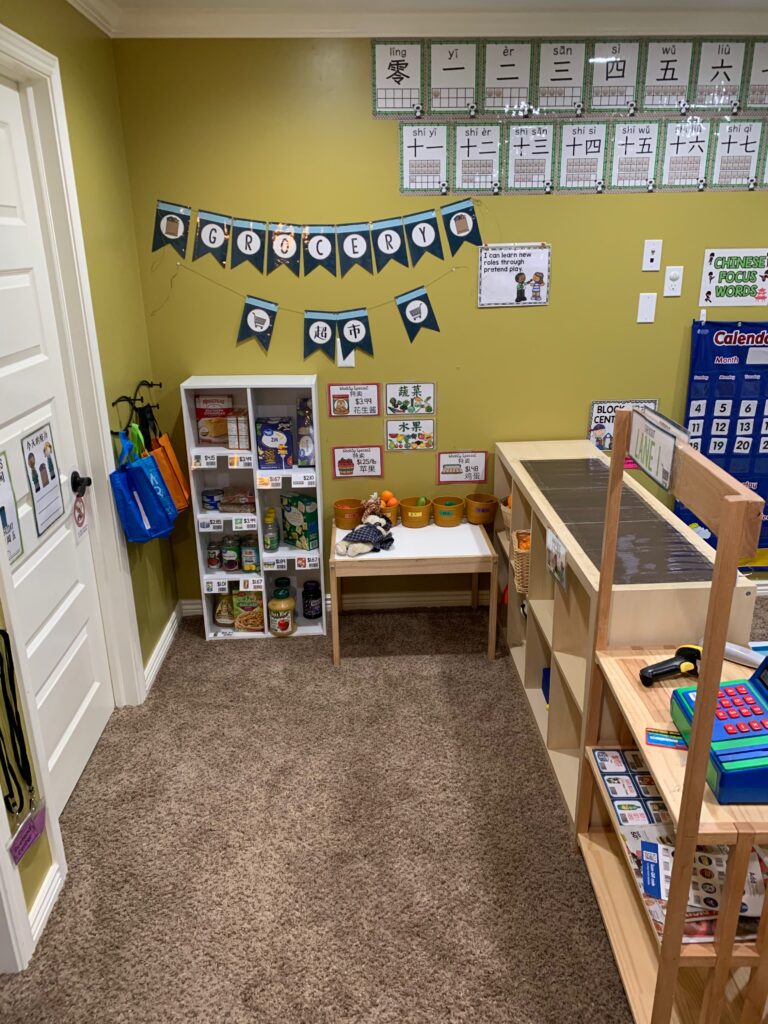
How to set up a pretend grocery store
Creating a pretend grocery store for kids is easier than you might think. Here are some tips to help you set up a dramatic play area that will keep your little ones engaged for hours.
1. Choose a space for your grocery store: Look for an area in your home or classroom where you can set up your pretend grocery store. Ideally, you’ll want a space that is large enough for kids to move around freely and store all the play food and toys.
2. Gather supplies: You don’t need to break the bank to set up a pretend grocery store. Start by collecting some cardboard boxes, baskets, or bins to store the play food. You can also use shelves or bookcases to display the items for sale.
3. Get play food and accessories: One of the most important components of a pretend grocery store is the play food. Look for toy fruits, vegetables, meats, and packaged goods at your local toy store, dollar store, or online. You can also add some play money, a cash register, and shopping baskets to enhance the play experience.
4. Set up your store: Once you have all your supplies and play food, it’s time to set up your store. Start by arranging the shelves and bins in an organized way. Use signs or labels to mark each item for sale. Place a cash register and some play money near the entrance, and don’t forget to add some shopping baskets or carts.
5. Encourage play: Now that your pretend grocery store is set up, it’s time to let the kids play. Encourage them to take turns being the shopper and the cashier. Teach them about counting money, identifying different foods, and making a shopping list. You can also ask them to come up with their own creative recipes using the play food.
Setting up a pretend grocery store is a great way to encourage imaginative play and foster creativity in young children. With a little planning and creativity, you can create a fun and educational experience that your kids will love.
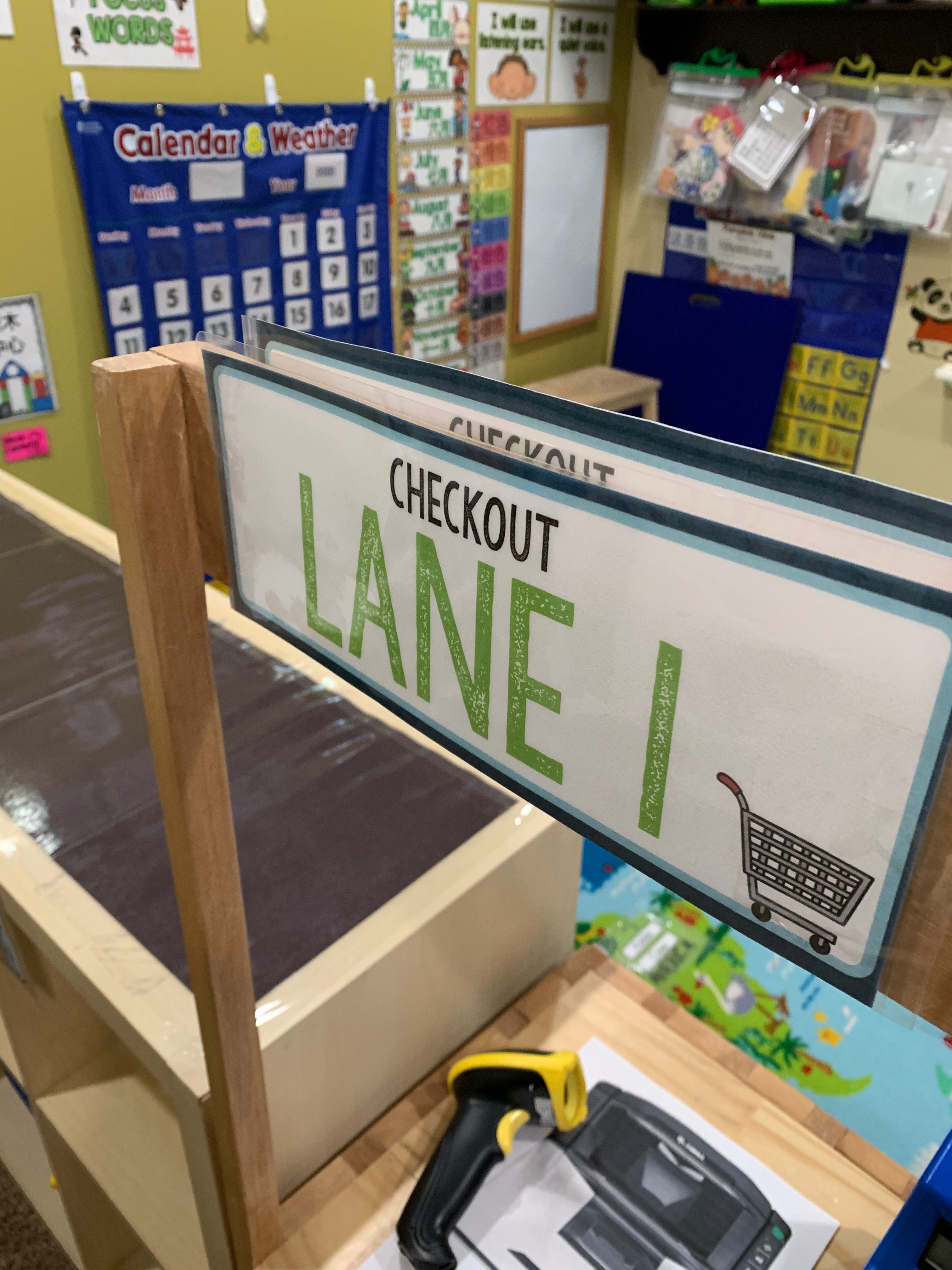
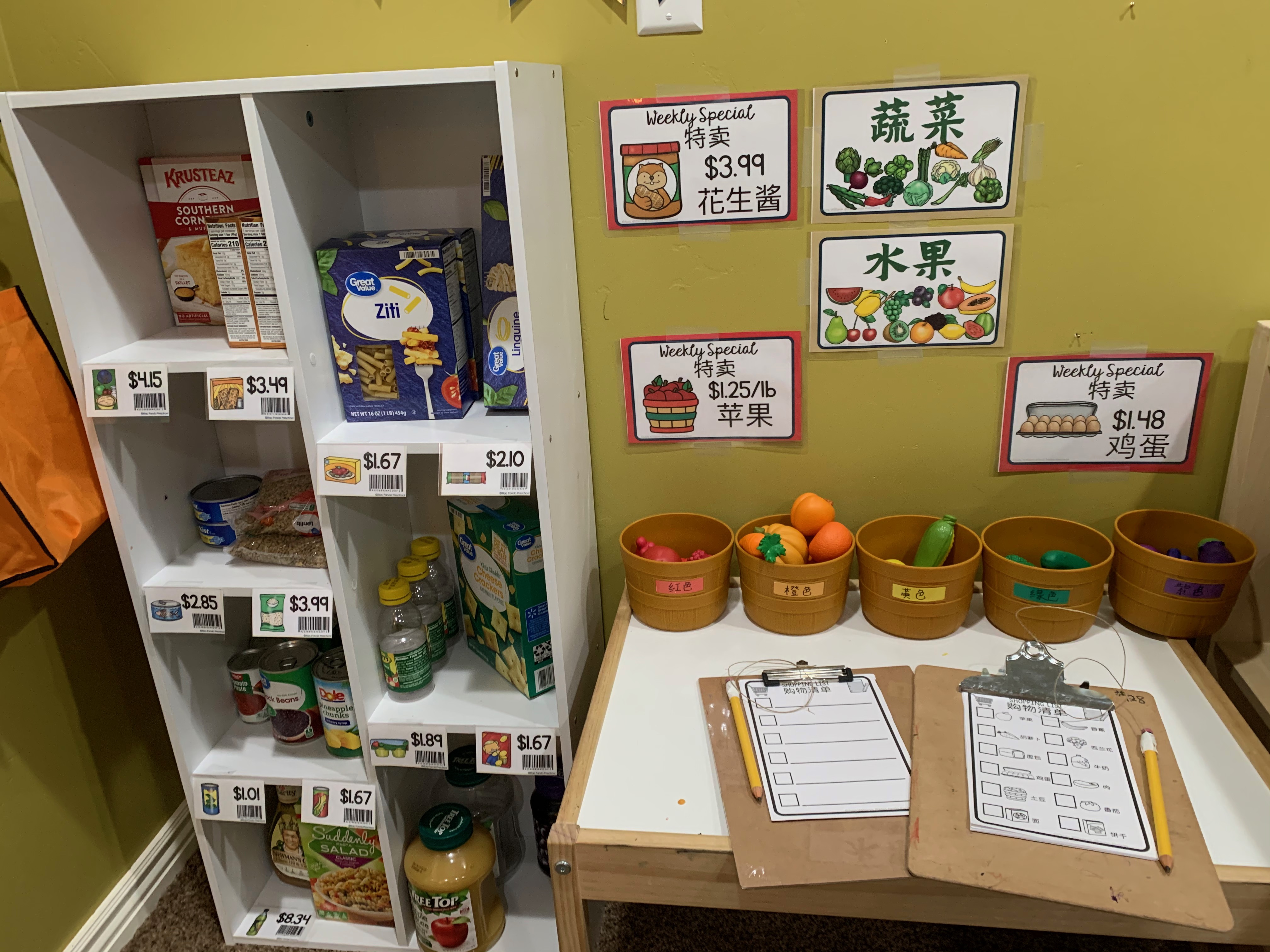
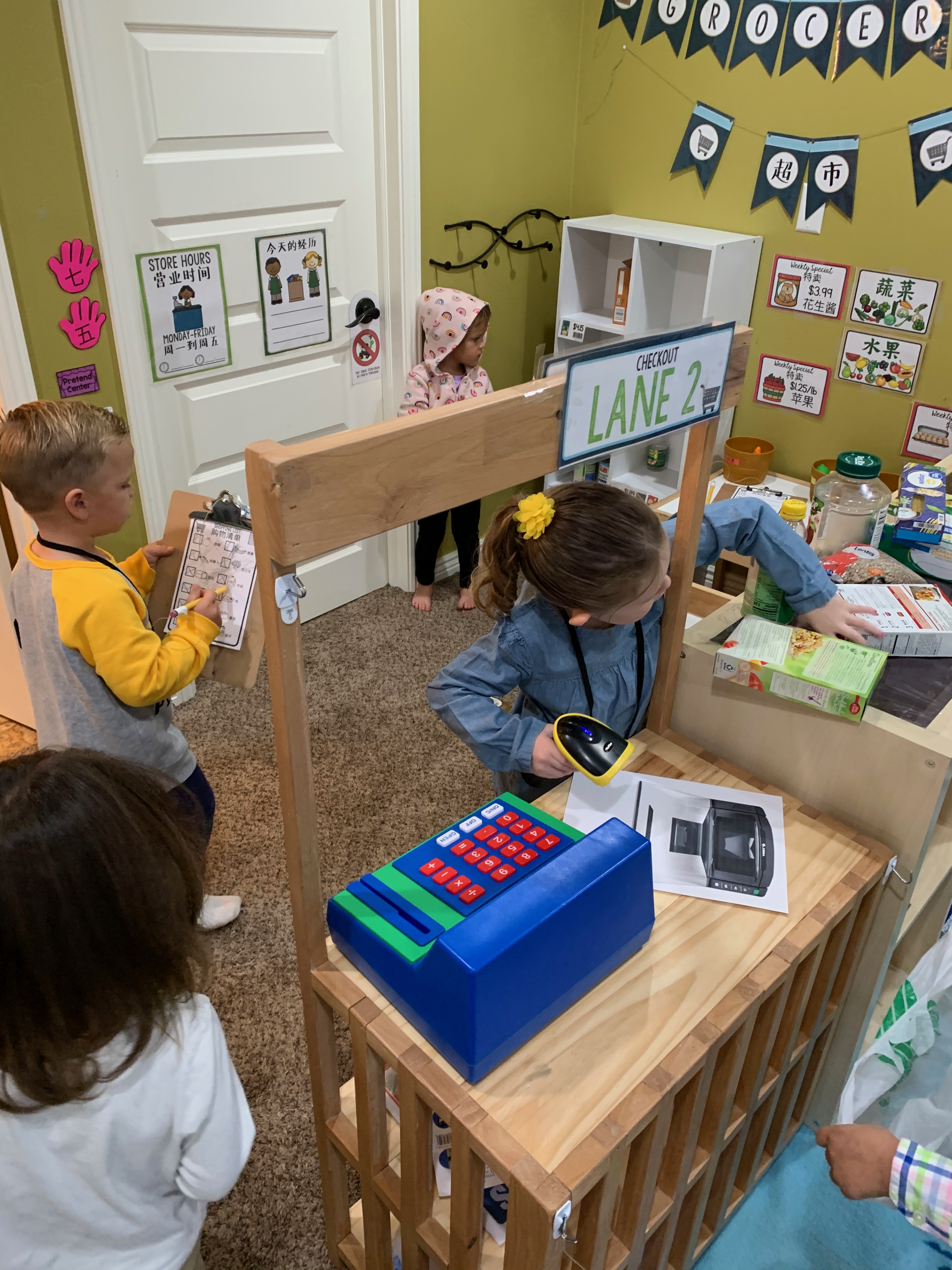
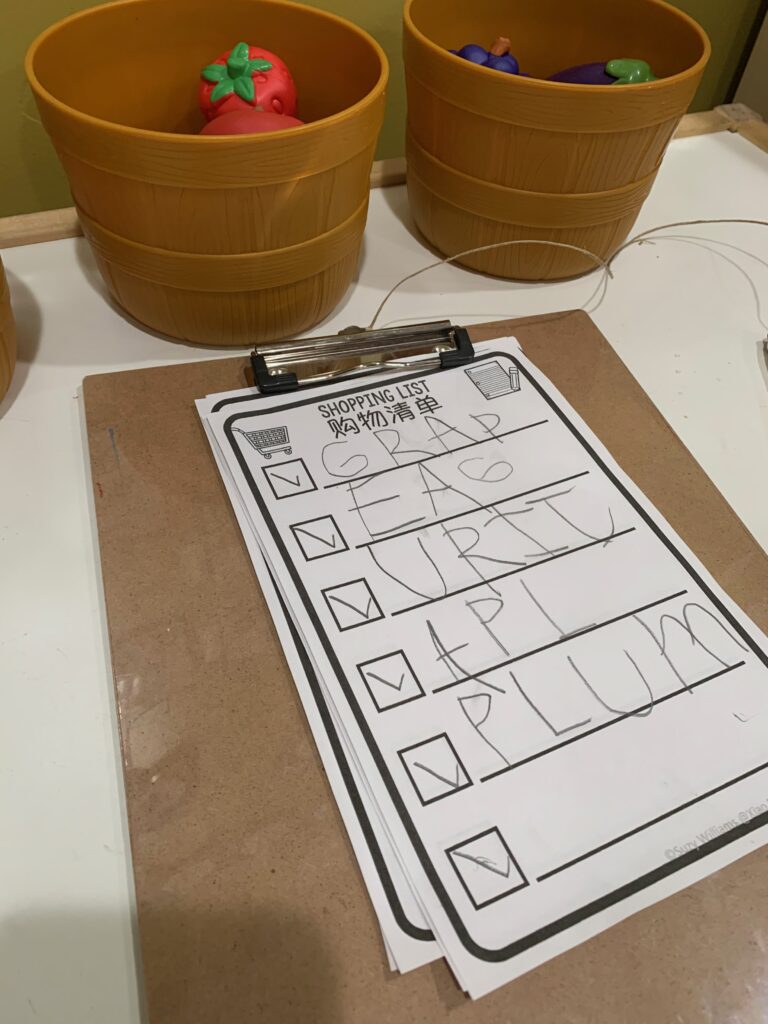
Tips for making the most of pretend play
1. Encourage creativity: Children love to imagine and create their own scenarios. Allow them to be creative and explore their own ideas. Don’t be afraid to let them take the lead and guide the play.
2. Offer a variety of props and materials: Fill the pretend grocery store with a variety of items, from toy fruits and vegetables to cardboard boxes and shopping carts. This will keep children engaged and enhance their imagination.
3. Join in the fun: Children love it when adults participate in pretend play with them. It’s a great opportunity to bond and create memories together.
4. Incorporate real-life learning opportunities: Pretend play offers the opportunity to teach children about concepts like counting, sorting, and money. Use play money and encourage children to count out change for their purchases.
5. Let children solve problems: If a child is struggling to figure out how to set up the grocery store, or how to price items, encourage them to come up with their own solutions. This will build their problem-solving skills and foster independence.
6. Don’t interrupt the flow: When children are engaged in pretend play, it’s important to let them lead the way. Avoid interrupting their play unless absolutely necessary. This will allow them to fully immerse themselves in the experience.
By creating a dramatic play grocery store, you can offer young children the opportunity to learn and explore through pretend play. With a few tips and some creativity, you can make this activity a fun and valuable experience for everyone involved.
Some things I’ve noticed from my preschoolers:
1. Leave it alone for a few days. The first week or so after you set up a dramatic play, it’s very exciting, very popular and lots of kids are playing in there and having fun. During this time, I let it be – let the kids decide how they want to play with it, what roles they want to try and be, and let them explore.
2. Once the initial excitement has died down, or the play area is losing it’s novelty and popularity, I go play there for a little while. Having the teacher or parent there to get things rolling again reignites the excitement! Also, if there are aspects they haven’t engaged with yet, I model it for them. For example, in the grocery store, I would add my name to the manager board, so they want to try that too. I will write myself a grocery list, create a receipt when someone is getting checked out, and use questions and phrases like a grocer might use: “Did you find everything you were looking for?” “Let me weigh these bananas for you.” “You’re total today is $5.25. Would you like your receipt?”
Conclusion
Overall, creating a pretend play grocery store for young children is a wonderful way to encourage their imagination, creativity, social skills, and cognitive development. Through pretending to buy and sell food, children are learning valuable life skills while having fun. And with a little effort and creativity, setting up a pretend grocery store can be a simple and low-cost activity that provides hours of entertainment for children. So next time you’re looking for a fun and educational activity for the little ones, consider setting up a pretend grocery store and watch their imaginations come to life.

